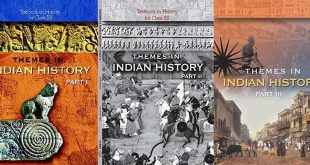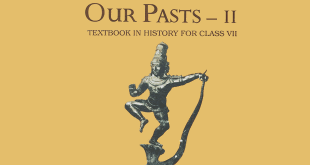Question: What do you know about early life of Gandhiji?
Answer: The national movement entered a new phase after the arrival of Gandhiji on 2 October 1869 at Porbandar (Gujarat), he received his early education in India. Later, he went to South Africa to practice law. During his stay these he fought against the oppression of the white rulers against the Indians living there. During this struggle, He evolved the concept of ‘satyagrah’ or non-violent struggle against oppression. It was based on truth or ‘satya’ and non-violence or ‘ahimsa’
Question: How was dyarchy introduced in the province?
Answer: The system of dyarchy or dual government was introduced in the provinces. The state subjects were divided into two-reserved and transferred. Subjects like finance and police, which the British considered more important, were put int the reserved list. Subject like education and public health, which the British considered less important, were the responsible to the legislature.
Question: What happened on 13 April 1919 in Punjab?
Answer: On 10 April 1919, two national leaders – Dr Saifuddin Kitchlew and Dr. Satya Pal were arrested in Punjab. On 13 April 1919 (The festival of Baisakhi was being celebrated on this day), people gathered in a park in Amritsar, called the Jallianwala bagh, to protest against these arrests. The peaceful gathering was attended by men, women and children. General Dyer, the military commander of Amritsar, came to the park with some soldier and blocked the only entrance of the park. He then ordered his men to open fire. The firing lasted for nearly 10 minutes, till all the ammunition was exhausted. Hundreds of people were killed and thousands were critically wounded.
Question: Discuss the early campaigns of Mahatma Gandhi. Was he successful in them?
Answer: The first movement in which Gandhiji got involved was at Champaran in Bihar in 1917. Here, peasants on the Indigo plantations were forced to sell indigo at prices fixed by the European planters. These prices were very low. Gandhiji protested against this and forced the government to increase the price at which the planters bought indigo from the cultivators. In 1918, Gandhiji led the workers of the textile mills in Ahmedabad against mil-owners. Ultimately, the mill-owners had to raise the wages of the workers. Gandhiji also involved himself with the peasants of Kaira (Kheda) in Gujarat. His agitation forced the government to suspend tax collection because the crops had failed that year.
 Class Notes NCERT Solutions for CBSE Students
Class Notes NCERT Solutions for CBSE Students




